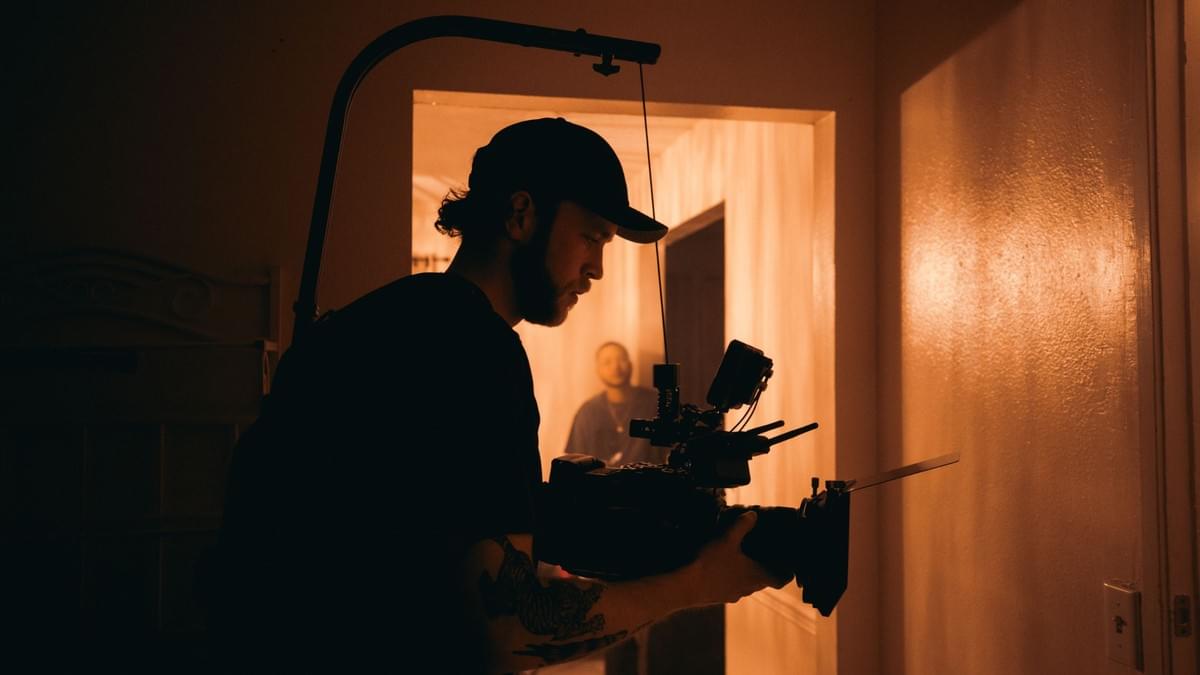You've poured your heart into creating a great film, but that's not the end of the journey. Film distribution is the key step that gets your finished project to the audiences. For independent filmmakers working or seasoned producers aiming, knowing the ins and outs of movie distribution can make all the difference.
At ORWO Studios, we've seen how a solid distribution strategy turns a creative vision into a commercial success. Based in Louisiana, our facility has helped numerous productions. Whether it's a feature or a documentary, film distribution is the crucial last step.
What Is Meant by Film Distribution?

What is film distribution at its core? Film distribution refers to the process of getting your finished movie in front of the right people. It's not just about putting your film online or sending it to theaters; that's just the tip of the iceberg. To do film distribution right, you need to plan carefully, analyze the market, coordinate marketing, and handle delivery logistics.
The film distribution process usually kicks off during post-production. This is when distributors look at things like how popular the genre is, if the cast is well-known, and where your film fits in the market. This helps them figure out the best way to release your film, which affects how many people see it.
What is movie distribution in practical terms? It's about linking content creators with their audiences. To handle modern movie distribution effectively, you need to know your way around the global market, understand what different platforms require, and recognize how people's viewing habits are changing.
Understanding the Film Distribution Landscape
The old way of releasing movies in theaters is now competing with streaming platforms. This change has created both opportunities and challenges for filmmakers.
Streaming services have significantly changed film distribution economics. Now, companies like Netflix and Disney+ play a big role in buying and showcasing content. But these platforms often want to own all the rights forever, which means filmmakers need to think carefully about the long-term benefits.
Nowadays, movies are often released at the same time in theaters and on streaming services. Alternatively, they get a shorter run in theaters before going digital. This flexibility helps distributors make the most of different revenue streams.
Types of Film Distribution Channels
Theatrical Distribution
Theatrical film distribution is still the most respected way to release a movie. Even with digital platforms on the rise, theatrical releases still bring in a lot of money. Big cinema chains and independent theaters offer different paths for movie distribution.
Getting a movie into theaters takes a budget and timing. Distributors have to work with theater owners to book screen time and avoid other big releases. To succeed, you need people to be talking about the movie in a positive way.
Digital and Streaming Distribution
Digital film distribution gives filmmakers a direct line to audiences worldwide. Streaming platforms and digital stores offer different ways to make money, including subscriptions and ads that support their content. Requirements for movie distribution differ from one platform to another.
Television and Cable Distribution
TV is still a great way to get your film in front of people, especially if you're making documentaries or genre films. Cable networks and premium services are all potential buyers. Television movie distribution often involves complex territorial licensing arrangements. Different networks may acquire rights for specific regions or time periods, requiring distributors to manage multiple contracts.
How to Get Your Film Distributed

Festival Strategy
Big festivals like Sundance and Cannes draw in distributors looking for fresh content. When your film premieres at a festival, it gets critics talking and can lead to distributors wanting to pick it up.
Festivals are a key part of movie distribution, and choosing the right venues is crucial. Picking a festival that's a good fit for your movie can really help attract the right distributors. Doing well at a festival can directly lead to better distribution deals.
Sales Agents and Representatives
Sales agents know the market and can negotiate deals. Sales agents take care of the tricky part of getting a film out there. Choosing the right sales agent for movie distribution requires looking into their past experience and how much they charge. Agents with strong connections at major distributors can get better deals and release their films in more places.
Direct Distribution Approaches
Self-distribution is for indie filmmakers who are willing to put in the time and effort to manage their own film distribution. Digital platforms and services like aggregators let filmmakers distribute movies straight to consumers.
Self-distribution is a hands-on approach; filmmakers have to create promotional campaigns too. It's a lot of work, but the payoff can be worth it.
Film Marketing and Distribution Integration

Film marketing and distribution need to be on the same page till the project reaches its audience. This process kicks off during production and then continues during festival promotion.
Film marketing and distribution are key to keeping your message consistent everywhere. When people see your movie's trailers and press releases, they should get the same vibe whether they're at the theater or buying from an online store.
Social media is crucial for film marketing and distribution today. Platforms like Instagram and YouTube let you spread the word in a way that traditional ads can't. Building anticipation through social media often works wonders.
Independent Film Distribution Strategies
Indie filmmakers have a tough time getting their movies out there due to restricted marketing budgets and competition from major studios. On the other hand, independent movie distribution gives filmmakers more control over their work.
Smarter film distribution strategies can really pay off. For example, documentaries that focus on specific topics can tap into educational markets, and genre films can rely on passionate fan communities for support. This approach often brings in more money per viewer.
Community engagement is a big deal for independent movies. Doing grassroots campaigns and having filmmakers show up in person can create real connections. This can then lead to people keeping an interest in the movie.
The Louisiana Film Tax Credit Program Advantage
Louisiana's film tax credit program just got a major boost, making it a go-to spot for productions. The recent Act 44 legislation took tax credits up to 40% for qualified productions, putting Louisiana at the top of their list.
At ORWO Studios, we help productions get the most out of the Louisiana film tax credits. Our services cover everything from production support to post-production facilities. We make the whole process smooth and straightforward.
The Louisiana film tax credit program is a big draw for major productions. These films frequently get more visibility, which can lead to wider releases.
Revenue Models and Monetization

Film distribution revenue models differ a lot depending on the channel and location. Knowing how these models work helps filmmakers make smart decisions about who to partner with.
Streaming platforms usually offer a flat fee or a share of the revenue based on how many people watch. The way movies are traditionally distributed to theaters involves some complex math with exhibitors, distributors, and producers.
International film distribution is huge business. Licensing deals in specific territories often bring in more money than domestic sales. To succeed, you need to know the global markets.
Common Distribution Pitfalls to Avoid
Many filmmakers make costly mistakes when negotiating film distribution deals that can hurt their project. Knowing these common errors helps creators look out for themselves. Jumping into distribution deals too quickly can lead to bad terms. Lawyers who specialize in movie deals can offer crucial protection against unfair agreements.
Not holding onto essential rights can greatly restrict future revenue opportunities. Effective film distribution strategies balance retaining key rights for later use with providing distributors enough exclusivity.
International Film Distribution Considerations
When it comes to getting movies out to a global audience, it's essential to know what different markets want. Regions also have their own preferred platforms for watching movies. When movies are released internationally, there are a few things to consider.
You need to add subtitles and dub the movies. These expenses have to be factored into how much money you expect to make in each area.
Distribution partnerships can be different from one region to another, which means coordinating with multiple distributors who have their own strategies. To navigate these relationships, you need to know a lot about how movies are distributed around the world.
To Conclude
Successful film distribution involves a lot of planning and executing across different channels. The film landscape is always changing with new tech and shifts in consumer behavior, which creates challenges but also opportunities. At ORWO Studios, we know that making a great movie is just the start. To get it right, you need it to be distributed well. Our Louisiana facility has everything you need to make that happen.
The Louisiana film tax credit program has opened up new avenues for getting movies out there. From indie films to major studio projects, we've got what you need to achieve your film distribution goals.
To make a film successful in distribution, you need the same creativity and attention to detail. Filmmakers need to build relationships with industry professionals. Staying focused on connecting with their audience is key. By doing this, they can navigate the process and bring their vision to life.
Frequently Asked Questions

What is the difference between film distribution and movie distribution?
There's no real difference between film distribution and movie distribution. Both make finished movies available to audiences in different ways. People in the industry use these terms interchangeably all the time.
How long does the film distribution process typically take?
The film distribution timeline is all over the place. If you go the festival route, it could take 6 to 18 months to get your film distributed. Direct streaming deals, on the other hand, can be wrapped up in 2 to 6 months. With self-distribution, you can start right after post-production.
What percentage of revenue do distributors typically take?
Traditional distributors often take a big chunk of what you make. Streaming platforms might offer a flat fee or take 15 to 30% of revenue. If you go the self-distribution route through an aggregator, you're usually looking at 10 to 20 percent plus some extra fees.
Can independent filmmakers handle their own distribution?
Independent filmmakers can handle their own film distribution through self-distribution platforms. It takes a lot of time and effort for marketing and building an audience, but it can pay off with more revenue.
How important are film festivals for securing distribution?
Film festivals are still a key factor in getting a movie out there. Major festivals offer a big stage for filmmakers to showcase their work and connect with distributors looking for fresh content.

